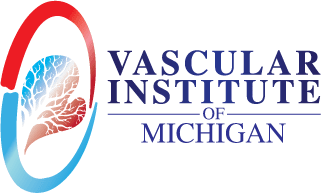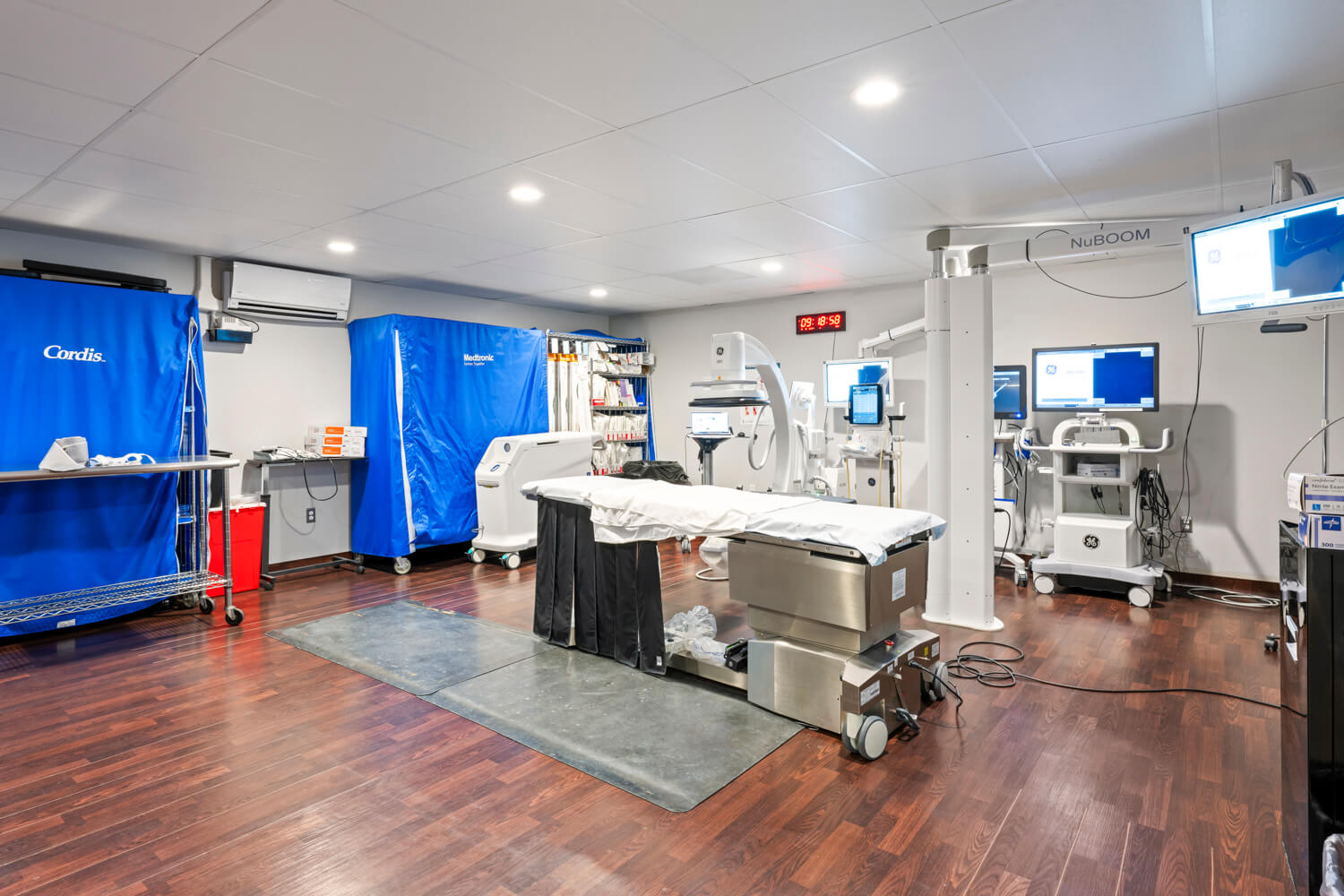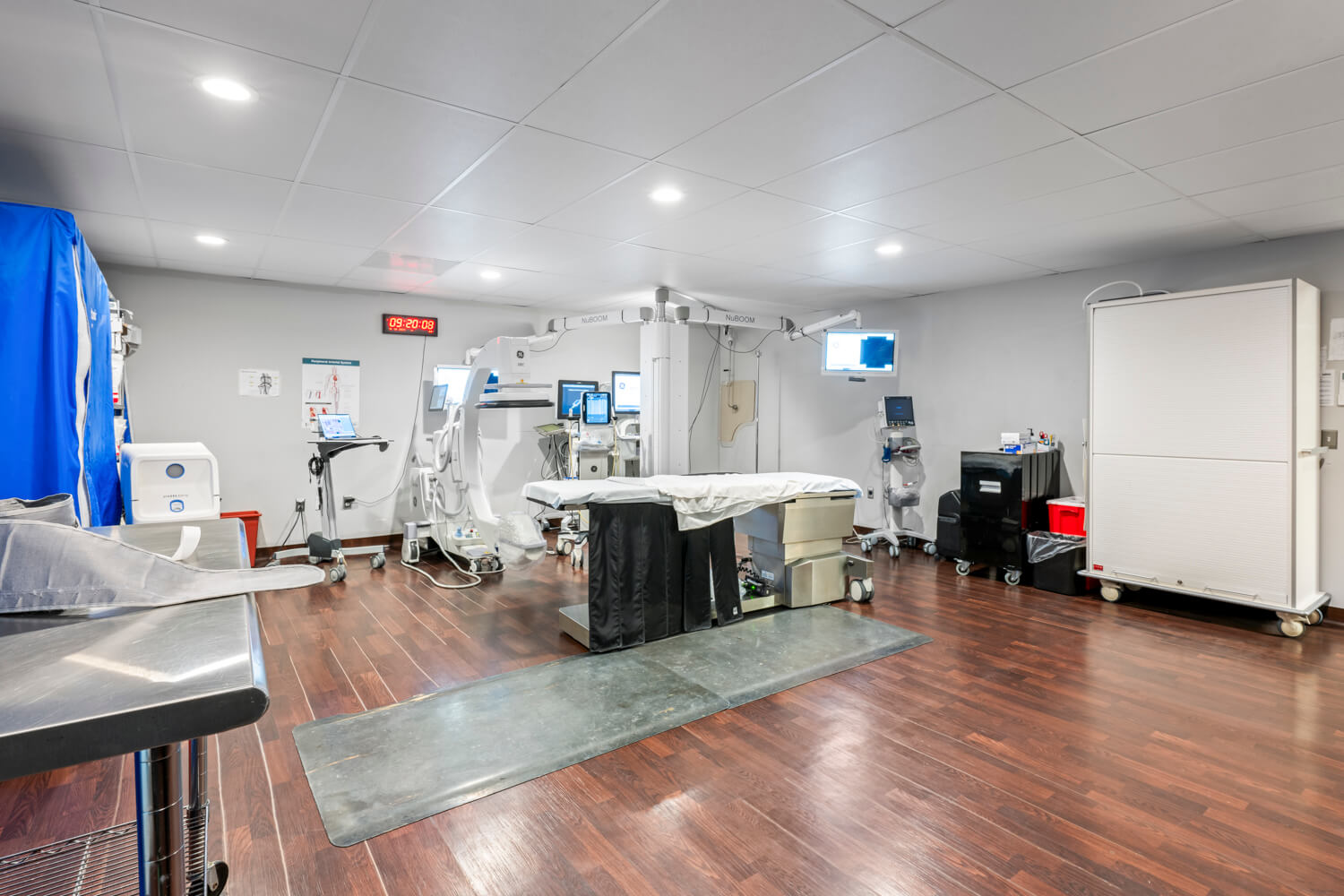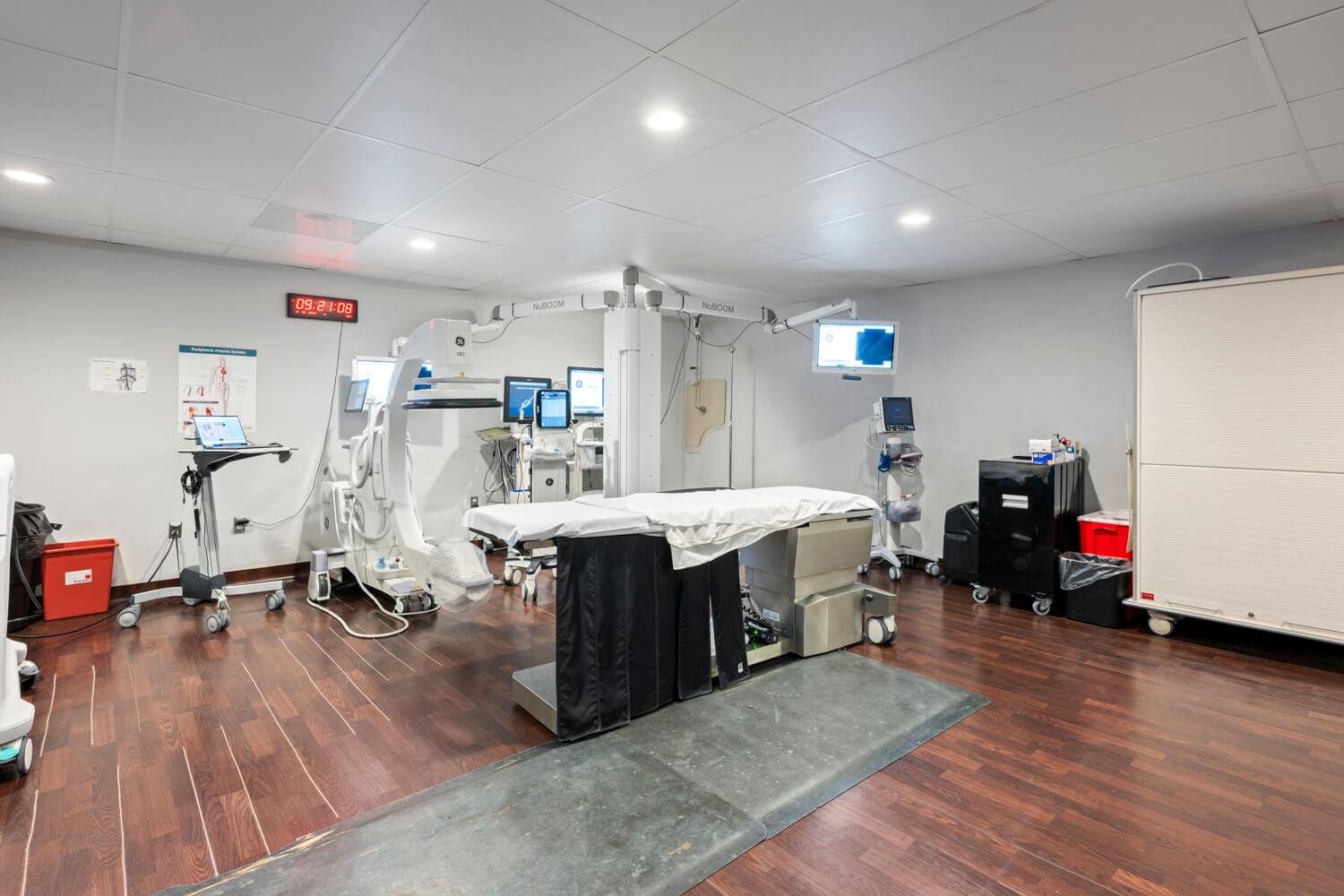Office Based Lab (OBL)
What is an Office Based Lab (OBL)?
Office-based labs, also referred to as outpatient interventional suites, access centers, or office-based endovascular suites, offer many distinct advantages and provide an alternative care delivery model to patients, payers, and physicians that is believed to be more efficient and cost effective than many hospital-based interventions. Patient satisfaction is very high in these centers, which are dedicated to the patient experience and optimal outcomes.
It is estimated that nearly 700 office-based labs exist in the United States to date, and that number is growing rapidly. Opening an OBL offers physicians more autonomy outside the hospital setting, one of the main attractions.
What vascular procedures are done in an OBL?
In the OBL, we perform minimally invasive vascular procedures that can be done without the use of general anesthesia. Most of these procedures are referred to as “Endovascular” which is a method of treating conditions affecting the blood vessels (vascular system) without making large incisions. Surgeons use tiny incisions, catheters and stents to repair damage to blood vessels and break up blood clots. These smaller incisions help reduce the time it takes the body to heal so you can get back to your daily activities sooner.
Office-based labs (OBLs) can perform a variety of vascular procedures, including:
- Arterial procedures
Angioplasty, stenting, atherectomy, drug elution balloons and stents, and subclavian stenting
- Venous procedures
Elective endovenous ablation, venograms, venoplasty, intravascular ultrasound, and stent placement
- Lower extremity interventions:
Chronic total occlusion (CTO), complex limb salvage procedures, and deep venous work
- Other procedures
Dialysis access maintenance (Fistulogram, Declot, Permacath Insertion/Removal/Replacement), renal and mesenteric revascularizations, and intra-vascular ultrasound
What is the difference between endovascular and open vascular surgery?
Both endovascular surgery and open vascular surgery are procedures to access and repair blood vessels damaged by vascular disease or injury. The difference is in how the surgeon accesses the blood vessels.
Endovascular surgery, or an endovascular procedure, uses a minimally invasive approach. Surgeons make punctures into the artery with a needle and then thread small flexible tubes called catheters through the blood vessels to reach the damaged area. The lack of an incision results in less blood loss and faster recovery.
In open (traditional) vascular surgery, surgeons make incisions to reach the blood vessels.
What is the difference between an Office Based Lab (OBL)and an ASC?
An OBL is a location where the health professional routinely provides examinations, diagnosis, and treatment of illness or injury on an ambulatory basis, where-as an ASC is a freestanding facility, other than a physician’s office, where diagnostic and surgical services are provided on an ambulatory basis.
What are the benefits of having my vascular procedure performed in an OBL?
OBLs can be a better option than hospitals for patients and vascular surgeons, as they can offer a more comfortable environment, shorter wait times, and more discretion over the case. Providers can also have more control over the entire procedure, from the initial greeting to post-op instructions. Studies have found that patients fare at least as well when treated in an OBL as they would in a hospital setting.
Is it safe to have my vascular procedure performed in an OBL?
When appropriately screened, almost all peripheral interventions can be performed in the office with minimal complications. For dialysis patients, outpatient intervention has a very low complication rate and is the mainstay of treatment to keep the dialysis access patent. Venous insufficiency, when managed in the office setting, also has a low complication rate. Office-based procedural settings should be seriously considered for percutaneous interventions for arterial, venous, and dialysis-related procedures.











